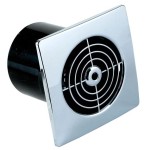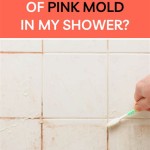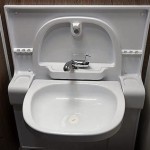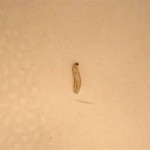How To Clean Very Dirty Bathroom Floor Tiles
Bathroom floor tiles, constantly exposed to moisture, soap scum, and various bodily fluids, can become breeding grounds for bacteria and mold. Regular cleaning is essential, but sometimes a deep clean is required to tackle ingrained dirt and grime. This article provides a comprehensive guide on how to effectively clean very dirty bathroom floor tiles.
Initial Assessment and Preparation: Before beginning the cleaning process, assess the type of tile. Different tile materials require different cleaning approaches. Ceramic and porcelain tiles are generally durable and can withstand harsher cleaning solutions, while natural stone tiles like marble or travertine are more porous and require gentler treatment. Identify any existing damage, such as cracks or chips, as these areas may require special attention.
Clear the bathroom floor of any obstacles, including rugs, trash cans, and toiletries. This will allow for unobstructed access to the entire floor area. Sweep or vacuum the floor thoroughly to remove loose debris, dust, and hair. This preliminary step prevents the spread of dirt during the wet cleaning stages.
Choosing the Right Cleaning Solution: For ceramic and porcelain tiles, a mixture of warm water and a mild dish soap is often sufficient for general cleaning. However, for heavily soiled tiles, stronger cleaning solutions may be necessary. A solution of warm water and white vinegar can effectively cut through soap scum and mineral deposits. Commercial tile cleaners are also available, but ensure they are appropriate for the specific tile type.
Natural stone tiles require more delicate handling. Avoid acidic cleaners like vinegar, as these can etch the surface. Opt for a pH-neutral cleaner specifically designed for natural stone. Baking soda mixed with water can also be used as a gentle scrubbing agent.
Effective Cleaning Techniques: Once the appropriate cleaning solution is prepared, apply it liberally to the floor tiles. Allow the solution to dwell for a few minutes to loosen the dirt and grime. This dwell time is crucial for breaking down stubborn stains. Avoid letting the solution dry completely on the tile surface.
Using a scrubbing brush or a stiff-bristled brush, scrub the tiles in a circular motion, paying particular attention to grout lines where dirt and mildew tend to accumulate. For stubborn stains, a grout brush or an old toothbrush can be beneficial. Avoid using abrasive scrubbing pads, as these can scratch the tile surface.
For heavily soiled grout, a paste of baking soda and water can be applied directly to the grout lines. Allow the paste to sit for 10-15 minutes before scrubbing with a grout brush. A mixture of hydrogen peroxide and baking soda can also be used for whitening discolored grout. Apply the mixture to the grout, let it fizz for a few minutes, then scrub and rinse.
Rinsing and Drying: Once the scrubbing is complete, thoroughly rinse the floor with clean water. Multiple rinses may be necessary to remove all traces of the cleaning solution. A mop and bucket can be used for this process, ensuring the water is changed frequently to avoid redistributing dirt. Alternatively, a handheld showerhead can be used for a more efficient rinse.
After rinsing, dry the floor thoroughly with a clean mop or microfiber cloth. This helps prevent water spots and the re-accumulation of dirt. Proper drying also inhibits the growth of mold and mildew. Ensure adequate ventilation in the bathroom to expedite the drying process.
Maintaining Clean Bathroom Floor Tiles: Regular maintenance is key to preventing the buildup of dirt and grime. Sweep or vacuum the bathroom floor regularly to remove loose debris. Wipe up spills and splatters promptly to avoid staining. Implement a regular cleaning schedule, mopping the floor with a suitable cleaning solution at least once a week. For high-traffic bathrooms, more frequent cleaning may be necessary.
By following these cleaning and maintenance practices, bathroom floor tiles can be kept clean and hygienic, enhancing the overall appearance and longevity of the bathroom.
Addressing Specific Stains: Certain types of stains require specific treatment. For hard water stains, a solution of equal parts water and white vinegar can be effective. Rust stains can be tackled with a commercial rust remover or a paste of lemon juice and salt. Mold and mildew stains can be treated with a solution of bleach and water, but ensure proper ventilation and test the solution on an inconspicuous area first to avoid discoloration.

How To Clean Bathroom Tiles At Home

Aged And Dirty Bathroom Floor A Professional Grout Cleaning In Chicago Can Make It Look Like New Again

How To Deep Clean A Tile Floor Maid Sailors

7 Most Powerful Ways To Clean Tiles Grout Naturally

Clean Old Dirty Bathroom Floors And Walls Cleaning Tools To Try Remove Dirt Mold Corrosion From White Tiles Sponge Photos Adobe Stock

How To Clean Bathroom Floors Easiest Step By Guide

3 Best Ways To Get Rid Of Hard Water Stains From Bathroom Tiles Kent

Tips And S About Deep Cleaning Your Bathroom Tiles Certified Clean Care

How To Turn Dirty White Tiles Pure

The Easiest Way To Clean Filthy Neglected Tile Flooring







